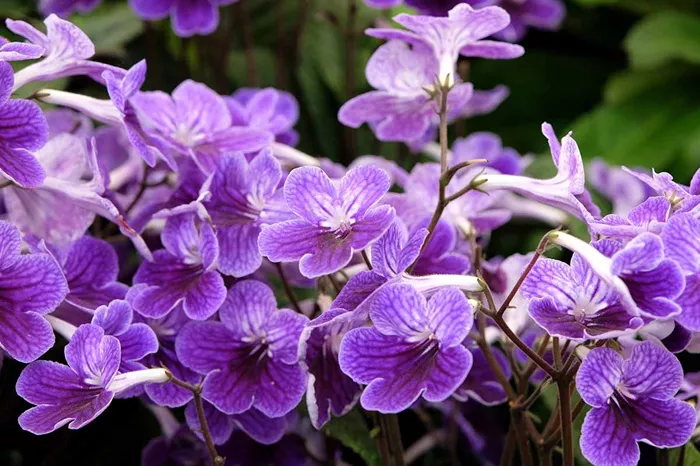Streptocarpus, often referred to as Cape primroses, are beloved for their vibrant blooms and lush foliage. After the flowering period, however, many gardeners find themselves wondering how to care for these plants to ensure continued health and future blossoms. This article will guide you through the essential steps and tips to help your streptocarpus thrive post-flowering, from pruning to repotting and beyond.
Post-Flowering Care: Pruning and Cleaning
Once the flowers have faded, the first step in caring for your streptocarpus is to remove the spent blooms. This process, known as deadheading, helps redirect the plant’s energy from seed production to new growth. Gently pinch off the flower stalks at their base, being careful not to damage the surrounding foliage. Deadheading not only tidies up the plant but also encourages the development of new flower buds.
In addition to removing spent blooms, it’s important to inspect the plant for any yellowing or damaged leaves. These leaves can attract pests and diseases, so it’s best to trim them away. Use clean, sharp scissors to make a clean cut close to the stem. Regularly cleaning up the plant helps maintain its overall health and appearance.
Maintaining Proper Growing Conditions
Streptocarpus plants thrive in specific environmental conditions, and maintaining these conditions is crucial after flowering. These plants prefer bright, indirect light. Direct sunlight can scorch their leaves, so place them near a north-facing window or provide filtered light through a sheer curtain. If you’re growing your streptocarpus outdoors, ensure it’s protected from intense midday sun.
Temperature is another important factor. Streptocarpus plants do best in temperatures ranging from 60°F to 75°F (15°C to 24°C). They are sensitive to extreme heat and cold, so avoid placing them near drafts or heating vents. Maintaining a consistent temperature helps the plant recover from flowering and prepares it for future growth.
Humidity is also essential for streptocarpus health. These plants originate from humid environments and benefit from higher humidity levels. You can increase humidity around your plant by placing it on a tray of pebbles filled with water or by using a humidifier. Misting the leaves occasionally can also help, but be careful not to overdo it, as wet leaves can lead to fungal issues.
Watering and Feeding
Watering is a critical aspect of post-flowering care for streptocarpus. These plants have a unique watering requirement: they need to be kept consistently moist but not waterlogged. Overwatering can lead to root rot, while underwatering can cause the leaves to wilt. The best way to determine when to water is to check the top inch of soil. If it feels dry to the touch, it’s time to water. Ensure that the pot has drainage holes to prevent water from pooling at the bottom.
After flowering, it’s a good idea to give your streptocarpus a boost with a balanced, water-soluble fertilizer. Choose a fertilizer with equal parts nitrogen, phosphorus, and potassium (N-P-K), such as a 10-10-10 formula. Dilute the fertilizer to half the recommended strength and apply it every two to four weeks. This gentle feeding schedule provides the nutrients the plant needs without overwhelming it.
Repotting and Soil Considerations
Over time, the soil in your streptocarpus pot can become compacted or depleted of nutrients. After flowering, it’s an ideal time to consider repotting, especially if the plant has outgrown its current container. Choose a pot that is only slightly larger than the current one, as streptocarpus prefers snug conditions.
When repotting, use a well-draining potting mix specifically formulated for African violets or similar plants. These mixes often contain peat moss, perlite, and vermiculite, which provide excellent drainage and aeration. Gently remove the plant from its old pot, taking care not to damage the roots. Loosen any compacted roots and place the plant in the new pot, filling in around it with fresh soil. Water thoroughly after repotting to help the plant settle in.
Pest and Disease Management
Streptocarpus plants are generally hardy, but they can still be susceptible to pests and diseases, especially after flowering when they may be more vulnerable. Keep an eye out for common pests such as aphids, mealybugs, and spider mites. These tiny insects can cause significant damage if left unchecked. Regularly inspect the undersides of leaves and stems for signs of infestation.
If you notice pests, treat the plant promptly. For minor infestations, you can often remove the pests by hand or with a cotton swab dipped in rubbing alcohol. For more severe cases, consider using an insecticidal soap or neem oil. These natural treatments are effective against many common pests and are safe for your plant.
Fungal diseases can also be a concern, particularly if the plant is overwatered or exposed to high humidity. Signs of fungal infection include yellowing leaves, leaf spots, or a fuzzy mold on the soil surface. To prevent fungal issues, ensure proper air circulation around the plant and avoid overhead watering. If you notice signs of disease, remove affected leaves and treat the plant with a fungicide if necessary.
Encouraging Future Blooms
With proper care, your streptocarpus can continue to produce beautiful blooms for years to come. After flowering, it’s important to give the plant a rest period to recover. During this time, reduce watering slightly and avoid fertilizing. After a few weeks, gradually resume regular care to encourage new growth and flower bud development.
To maximize the chances of future blooms, ensure that your streptocarpus receives adequate light and nutrients. Rotate the pot regularly to ensure even light exposure, and continue to monitor the plant’s environment for optimal temperature and humidity levels. With patience and attention, your streptocarpus will reward you with another stunning display of flowers.
Conclusion
Caring for streptocarpus after flowering is a rewarding process that ensures the plant remains healthy and vibrant. By following these steps, from deadheading and cleaning to maintaining proper conditions and managing pests, you can help your streptocarpus thrive. With a little attention and care, your Cape primrose will continue to bring beauty and joy to your home or garden.


